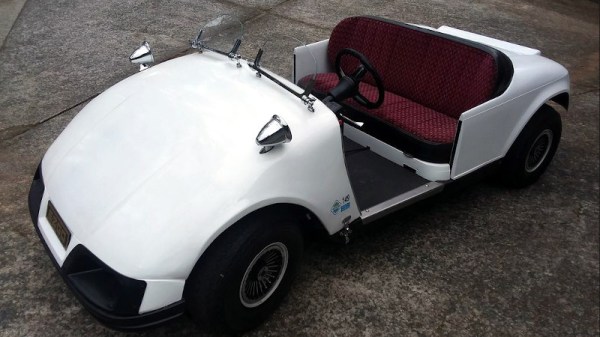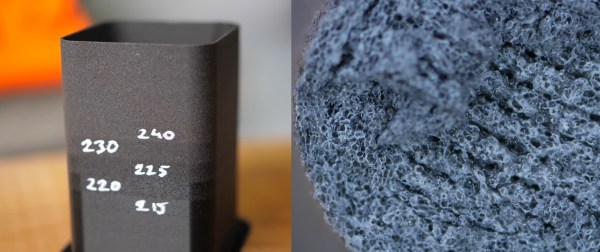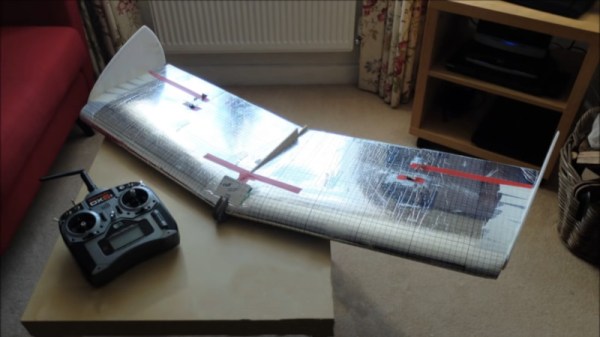Technically speaking, golf carts are already sports cars, they’re just not very sporty in themselves. When [rtkerth] went to trade in his old golf cart for a new one, he found that it would be more valuable to hang on to the old one and have a bit of fun with it. The result is retro-styled kart that would not look out of place at a micro car show.
Before getting to the really fun bits, he had to do a bit of prep work, such as relocating the six large batteries so that super cool stock seat can sit lower. Now the batteries are distributed throughout the vehicle, including one that’s been cleverly disguised as center console. Since the cart won’t be hitting the links anymore, there’s no need for a place to put clubs. Two of the batteries are now in the back, supported by a platform made from old bed frames.
We love the fiberglass fab work [rtkerth] did to the front and rear — it looks great, especially considering he’d never done it before. The rear is done more traditionally with a foam mold, but the front is fiberglassed directly over expanding foam insulation framed with cardboard. The local body shops refused to paint this baby roadster, so [rtkerth] did it himself before adding the killer touches — 1930s Brooklands-style windscreens and 1950s bullet mirrors that look great together.
Believe it or not, this isn’t the first amazing golf cart mod we’ve seen. Go see this baby DeLorean before you’re outta time.













